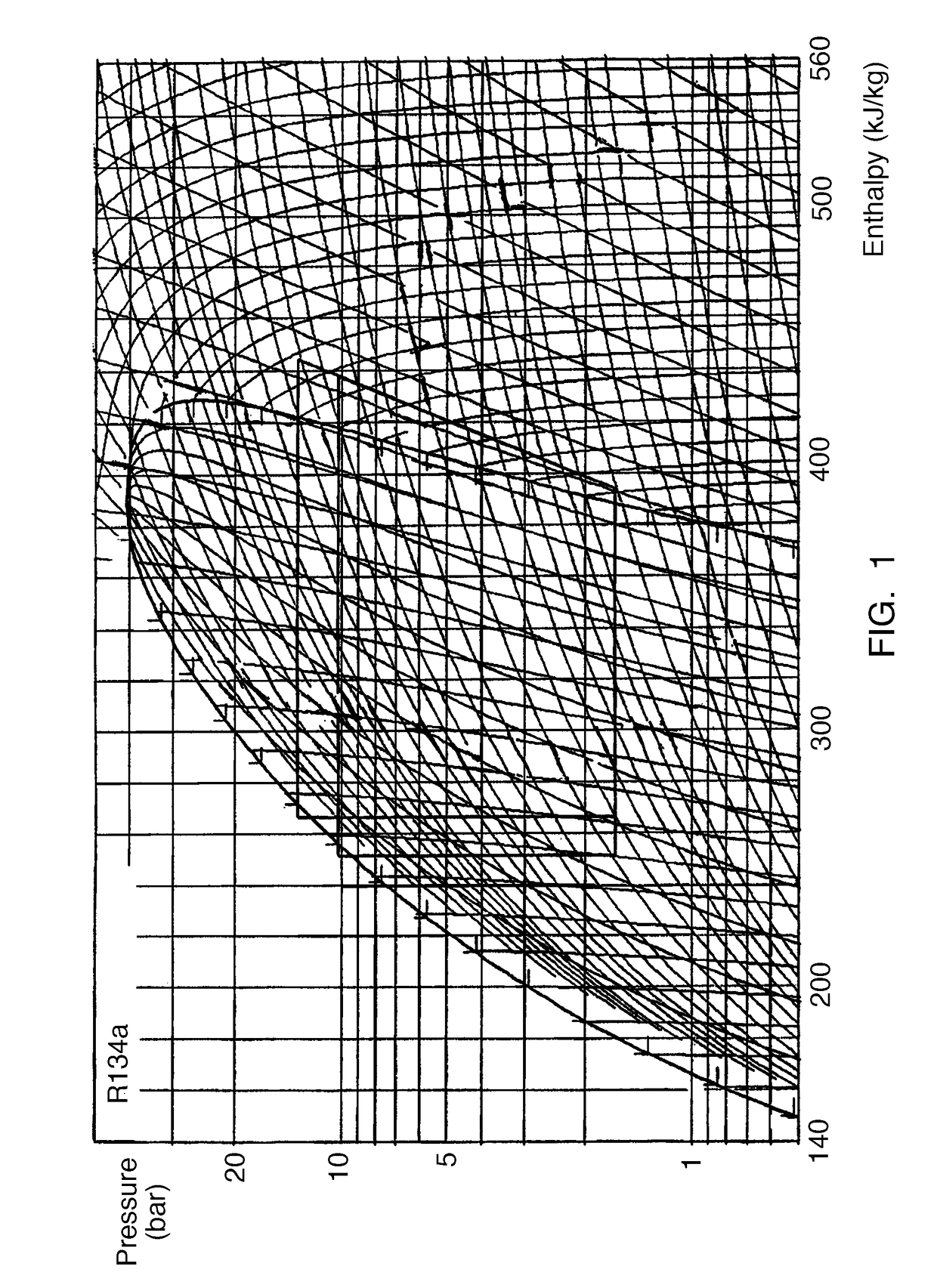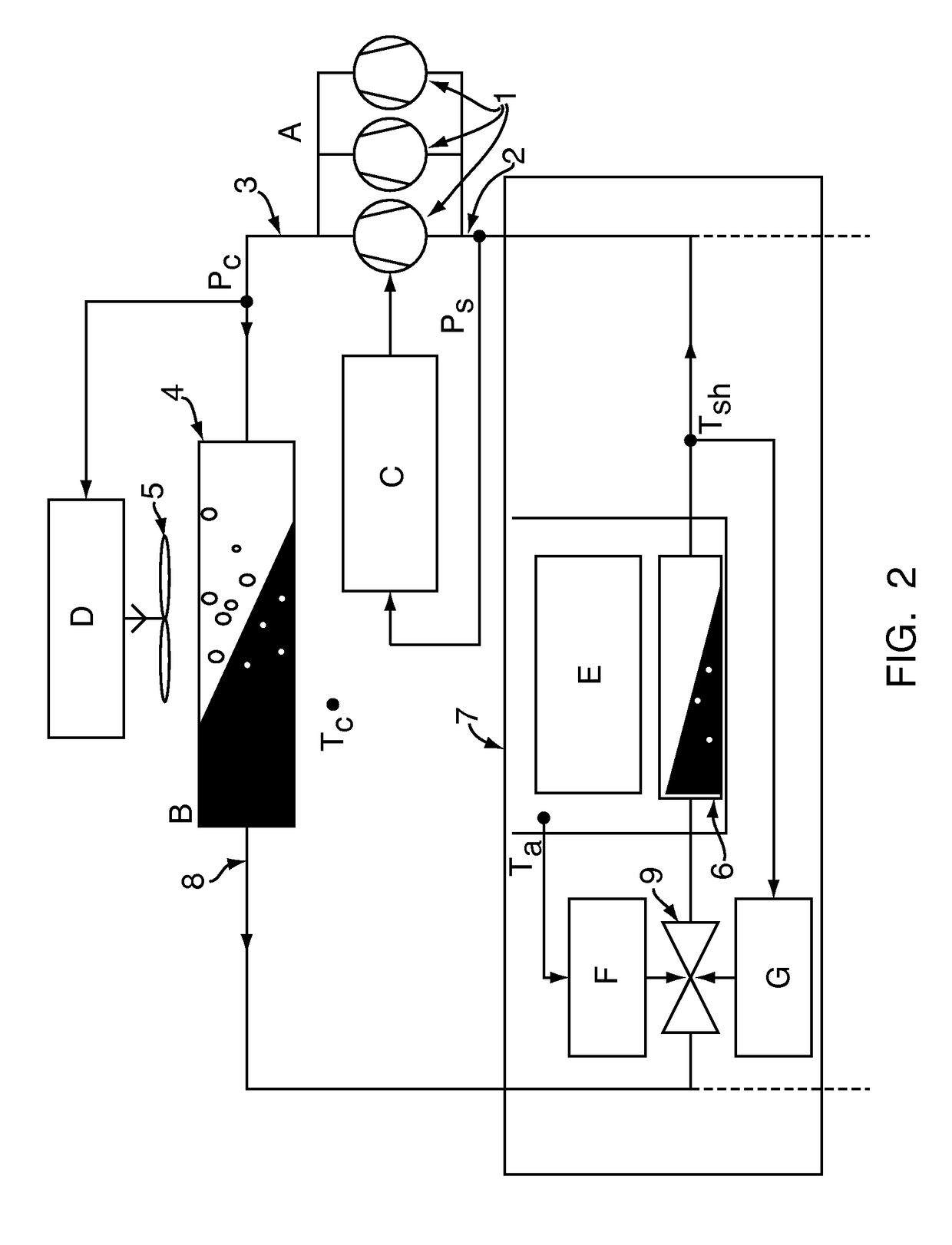Model prediction controlled refrigeration system
a refrigeration system and model prediction technology, applied in the field of refrigeration systems, can solve the problems of high evaporation temperature, inability to provide required cooling, and damage to the compressor, and achieve the effect of controlling the compressor's capacity and maximising the cooling capacity
- Summary
- Abstract
- Description
- Claims
- Application Information
AI Technical Summary
Benefits of technology
Problems solved by technology
Method used
Image
Examples
example 1
[0062]In the following, an example of a set of control algorithms for a refrigeration system according to the invention is presented for a system wherein the controller is adapted to optimize a cost function representing the costs of operating the system. In the cost function, the energy which is consumed by the compressors during operation and the wear on a compressor caused by a startup of the compressor is taken into consideration.
[0063]By formulating an objective function (=cost function), an optimal control sequence can be computed for a specified prediction horizon (N). This is done by finding a future control sequence that minimizes the objective function. In the objective function, the different objectives for the control can be weighted and thereby taken into account in controlling of the system.
[0064]In a supermarket refrigeration system an objective function may take the compressor capacity as an input and may read as follows:
[0065]J(k)=W·∑i=1NPsuc(T(k+i)|Tk)-Psuc,ref...
PUM
 Login to View More
Login to View More Abstract
Description
Claims
Application Information
 Login to View More
Login to View More - R&D
- Intellectual Property
- Life Sciences
- Materials
- Tech Scout
- Unparalleled Data Quality
- Higher Quality Content
- 60% Fewer Hallucinations
Browse by: Latest US Patents, China's latest patents, Technical Efficacy Thesaurus, Application Domain, Technology Topic, Popular Technical Reports.
© 2025 PatSnap. All rights reserved.Legal|Privacy policy|Modern Slavery Act Transparency Statement|Sitemap|About US| Contact US: help@patsnap.com


